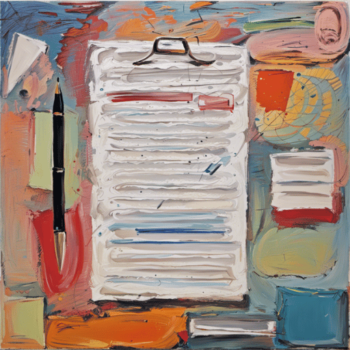Oenologist SOPs
Creating Standard Operating Procedures for your Oenologist work can be difficult and take time. That’s why we’ve created these example Oenologist SOPs so you can jumpstart your SOP creation process. We want to help you set up your Food & Beverage systems and processes by taking these sample SOPs and building out your own SOPs template library. By having all your Food & Beverage procedures in one place, your team will have the information they need at all times. Let’s look at some Oenologist SOP examples.
Oenologist SOP Examples
1. Grape Harvesting and Sorting SOP: This SOP outlines the procedures for harvesting and sorting grapes to ensure the highest quality for winemaking. The purpose is to maintain the integrity of the grapes and prevent contamination. The scope includes the entire grape harvesting process, from vineyard selection to transportation to the winery. The vineyard manager is responsible for overseeing this SOP. Reference SOPs include Vineyard Maintenance and Grape Transportation.
2. Grape Crushing and Destemming SOP: This SOP details the steps for crushing and destemming grapes after they have been harvested. The purpose is to extract the juice while removing stems and other unwanted materials. The scope covers the crushing and destemming process within the winery. The cellar master or winemaker is responsible for this SOP. Reference SOPs include Grape Harvesting and Sorting and Juice Extraction.
3. Fermentation Management SOP: This SOP outlines the procedures for managing the fermentation process, which converts grape juice into wine. The purpose is to control temperature, monitor sugar levels, and ensure proper yeast activity. The scope includes the fermentation tanks and related equipment. The oenologist or winemaker is responsible for this SOP. Reference SOPs include Grape Crushing and Destemming and Yeast Inoculation.
4. Barrel Aging and Cellar Management SOP: This SOP provides guidelines for the aging of wine in barrels and the overall management of the cellar. The purpose is to enhance the flavor and complexity of the wine while maintaining proper storage conditions. The scope includes the cellar, barrel room, and related equipment. The cellar master or oenologist is responsible for this SOP. Reference SOPs include Fermentation Management and Bottling Preparation.
5. Quality Control and Lab Analysis SOP: This SOP outlines the procedures for conducting quality control tests and lab analysis on wine samples. The purpose is to ensure that the wine meets quality standards and to identify any potential issues. The scope includes the laboratory and testing equipment. The lab technician or oenologist is responsible for this SOP. Reference SOPs include Fermentation Management and Bottling Preparation.
6. Bottling Preparation SOP: This SOP details the steps for preparing wine for bottling, including filtration, stabilization, and labeling. The purpose is to ensure that the wine is ready for packaging and distribution. The scope covers the bottling line and related equipment. The production manager or oenologist is responsible for this SOP. Reference SOPs include Barrel Aging and Cellar Management and Quality Control and Lab Analysis.
7. Wine Tasting and Evaluation SOP: This SOP provides guidelines for conducting wine tastings and evaluations to assess the quality and characteristics of the wine. The purpose is to make informed decisions regarding blending, aging, and marketing. The scope includes the tasting room and evaluation procedures. The oenologist or winemaker is responsible for this SOP. Reference SOPs include Quality Control and Lab Analysis and Bottling Preparation.
8. Vineyard Maintenance SOP: This SOP outlines the procedures for maintaining vineyards, including pruning, pest control, and irrigation. The purpose is to ensure healthy grapevines and optimal grape quality. The scope covers all vineyard operations. The vineyard manager or oenologist is responsible for this SOP. Reference SOPs include Grape Harvesting and Sorting and Grape Crushing and Destemming.
9. Wine Marketing and Sales SOP: This SOP provides guidelines for marketing and selling wine, including branding, distribution, and customer service. The purpose is to promote and sell the wine effectively. The scope includes marketing strategies, sales channels, and customer interactions. The marketing manager or oenologist is responsible for this SOP. Reference SOPs include Bottling Preparation and Wine Tasting and Evaluation.
10. Winery Sanitation and Safety SOP: This SOP outlines the procedures for maintaining a clean and safe working environment in the winery. The purpose is to prevent contamination, ensure employee safety, and comply with health regulations. The scope covers all areas of the winery, including production, storage, and bottling. The winery manager or oenologist is responsible for this SOP. Reference SOPs include Fermentation Management and Quality Control and Lab Analysis
Oenologist SOP Templates
Looking for SOP templates for your Oenologist work? We’ve got you covered. You can build out your company SOPs using the sample SOP information above (added to our template) or our team can put together a starter SOPs template based on your Oenologist work. Get in touch if you’ve got questions about the quickest way to build out your Food & Beverage SOPs library.










